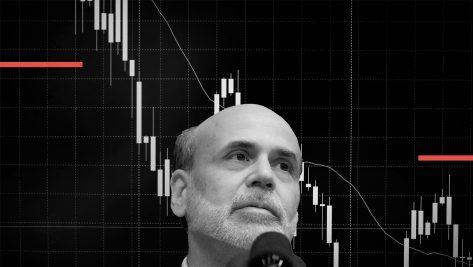Sovereign wealth funds (SWFs) are representative of the sort of institutional investors that sustain capitalism as we know it today. SWFs currently manage a total of $7.4 trillion in assets, a sum equivalent to the combined GDP of Russia and Germany. The influence of SWFs on the global stock markets is undeniable: these funds hold an estimated 9% of the world’s listed shares. However, despite their size and influence, this peculiar group of investors remains poorly understood.
The definition of SWFs as a group is several years in the making. The question of which entities can be classified as this type of investment vehicle is still being debated. The label sovereign wealth fund did not even exist until 2005. Coined by the economist Andrew Rozanov, the term refers to a heterogeneous group of investment funds that are still quite young (70% of the nearly one hundred SWFs currently in existence were established after the year 2000).
In recognition of the mutable nature of SWFs, one of the definitions we propose for this group is relatively broad: government-owned investment funds that pursue a long-term investment strategy and have no obligation to pay pensions. The distinction between SWFs and pension funds is a key element of the definition. SWFs, by definition, are free from the characteristic liability of public pension funds: obligations to pensioners. SWF investment policies are clearly influenced by this lack of obligations to third parties. Unlike pension funds, SWFs are not responsible for any regular payments and thus have no periodic liquidity needs. In addition, the focus on long-term investment distinguishes SWFs from private equity, which has defined investment horizons, and from hedge funds, which are often opportunistic.
The definition includes another fundamental characteristic: SWFs are state-owned. Some SWFs—such as the Alaskan fund in the United States and the funds of Dubai and Abu Dhabi in the United Arab Emirates—are owned by subnational governments. In any case, SWFs are public financial vehicles, a fact that has direct implications for the funds’ investment strategies and for the reaction of recipient countries. SWFs have been a subject of controversy in various cross-border transactions over the past decade. One key characteristic of SWFs is government involvement in state capitalism. SWFs make decisions on the basis of financial and economic criteria, but they are not free from state influence, which is proportional to the extent of government control over the funds’ decision-making bodies. In short, SWFs are major players in the state capitalism that dominates large economies such as China, Russia, Singapore, Saudi Arabia, and South Korea.
The assets managed by SWFs are equivalent in value to the combined GDP of Russia and Germany.
In fact, a key characteristic of SWFs is the fact that they were pioneered by developing countries—as defined by the United Nations—rather than developed economies. Of the rich countries that make up the Organization for Economic Co-operation and Development (OECD), only Australia and Norway have SWFs among the top 20 largest funds in terms of the value of assets under management. Norway, of course, is the exception that confirms the rule, not only because it is a rich European country but also because it owns the world’s largest SWF—valued at nearly $1 trillion—and is a model of governance, transparency, responsible investment, and shareholder activity. In short, Norway is a key player in the industry, but the industry is dominated by developing countries.
The list of the world’s largest SWFs is dominated by China, Saudi Arabia, Kuwait, Singapore, and the United Arab Emirates. In fact, 82% of the assets owned by this peculiar class of funds are in the hands of developing or transitional economies. After Norway’s fund, the largest SWF is the China Investment Corporation (CIC). Created just ten years ago, CIC has invested in multiple sectors and manages assets valued at $814 billion. The investment history of this mammoth fund reflects an industry-wide trend that illustrates how SWFs have evolved.
In December 2007, CIC acquired a 10% stake in Morgan Stanley for $5 billion. The investment was a financial disaster and was roundly criticized by various factions of the Chinese political establishment, which did not understand why China should bail out a strategic sector of its main economic rival. In a matter of months, SWFs invested a total of $56 billion in the Western financial system: Barclays, Citigroup, Credit Suisse, and UBS all received multimillion-dollar investments from SWFs in Singapore, China, Kuwait, Qatar, and the United Arab Emirates.
In the intervening decade, SWFs have embraced a wider range of sectors, investing vast sums in infrastructure, real estate, and even venture capital. Today, unlisted assets comprise 30% of the wealth controlled by SWFs, up from 12% in 2007. Over the same ten-year period, fixed-income securities have dwindled as a share of the assets held by SWFs, dropping from nearly 41% to 28%.
The influence of SWFs on the global stock markets is undeniable: these funds hold an estimated 9% of the world’s listed shares.
With volatile stock markets and vivid memories of the crisis triggered by the Lehman Brothers collapse, SWFs have turned to off-market investments: energy assets; key infrastructure such as ports (Melbourne), airports (Heathrow), and water-management utilities (Thames Water); buildings (Canary Wharf and the iconic Plaza Hotel); and even venture capital (the Saudi SWF is the main investor in the largest venture capital fund ever created, which has invested $93 billion in high-tech sectors such as artificial intelligence and robotics).
In summary, after making a name for themselves by acquiring stakes in major publicly traded financial groups, SWFs have reoriented their investment strategies. They now dominate sectors that require much greater sophistication, including technology, real estate (hotels, logistics, commercial property, etc.), infrastructure (usually in consortia with large private funds and public pension funds), and start-ups (the Singaporean funds Temasek and GIC are among the biggest players in venture capital).
SWFs are undeniably influential and appear likely to remain so in the coming years, despite falling oil prices. Their participation as responsible long-term investors will have an impact on a varied and substantial range of 21st-century financial issues, including venture capital, private equity, the “green economy,” the attainment of the Sustainable Development Goals, and efforts to improve corporate governance.
© IE Insights.











